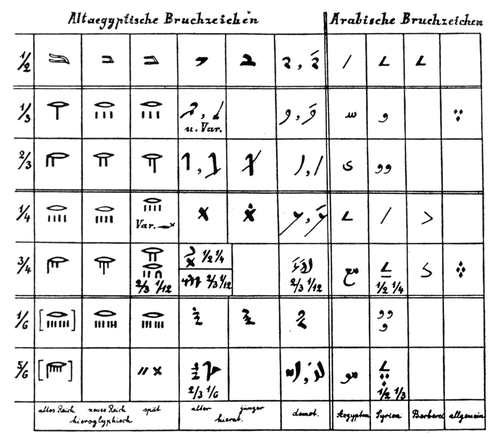Sethe. They show the most common of the great variety of forms which are found in the expositions given by Müller, Griffith, and Brugsch.
Observe that the old hieratic symbol for ¼ was the cross 𓏴, signifying perhaps a part obtainable from two sections of a body through the center.

Fig. 6.—Egyptian symbolism for simple fractions. (Compiled by Kurt Sethe)
19. In writing numbers, the Egyptians used the principles of addition and multiplication. In applying the additive principle, not more than four symbols of the same kind were placed in any one group. Thus, 4 was written in hieroglyphs 𓏽; 5 was not written 𓏺𓏺𓏺𓏺𓏺, but either 𓏼 𓏻 or 𓏾. There is here recognized the same need which caused the Romans to write, V after IIII, L=50 after XXXX=40, D=500 after CCCC=400. In case of two unequal groups, the Egyptians always wrote the larger group before, or above the smaller group; thus, seven was written 𓐀.
